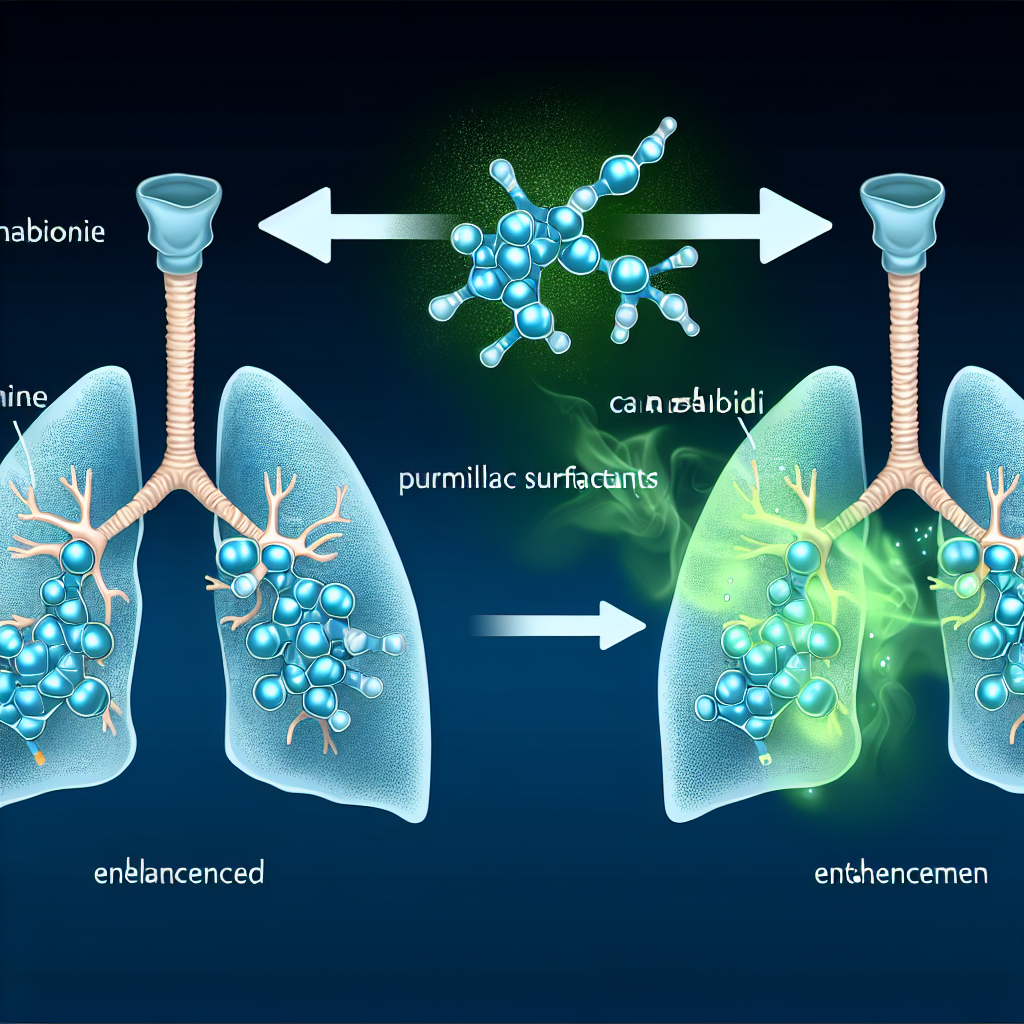Cannabinoid Delivery via Pulmonary Surfactants – Enhancing Lung Absorption for Medical Use
Introduction
As the medicinal cannabis industry continues to evolve, there is increasing interest in discovering new and improved drug delivery systems that optimize the therapeutic efficacy of cannabinoids. While traditional modes of consumption such as smoking, edibles, and tinctures are widely used, these routes often suffer from limitations in absorption, onset time, and bioavailability.
Inhalation methods, especially vaporization, have shown a rapid onset of effects, which is ideal for patients requiring immediate relief. However, even with vaporization, efficient and consistent lung absorption of cannabinoids can pose challenges, particularly due to the variability in formulation and individual differences in inhalation depth and technique.
One promising area of innovation in cannabinoid science lies in enhancing pulmonary delivery using lung surfactants. Pulmonary surfactants are complex mixtures of lipids and proteins naturally secreted by alveolar cells in the lungs. Their primary function is to reduce surface tension and maintain alveolar stability during breathing cycles.
These surfactants facilitate the spread and systemic absorption of compounds across the alveolar membrane. With cannabinoids being lipophilic (fat-loving) molecules, they pair well with the lipid-rich nature of surfactants. This harmonious chemical relationship allows for the development of formulations that can enhance the transport, stability, and efficacy of cannabinoids.
By leveraging the natural lung environment, these surfactants may serve as bio-carriers, reducing the rate of cannabinoid degradation and maximizing their passage through the alveolar-capillary barrier. This approach could benefit those suffering from chronic pain, epilepsy, or pulmonary diseases, who need rapid relief coupled with precise dosing.
As pharmaceutical-grade cannabis products gain wider global acceptance, innovation in inhalation techniques will be essential to bridging the gap between patient needs and drug performance. Pulmonary surfactant-based delivery systems could increase bioavailability, decrease variability in dosing, and potentially reduce lung irritation, making them ideal for chronic users. In this article, we examine the science behind pulmonary surfactants in cannabinoid therapy, explore medical applications, and assess their future in clinical practice.
Features
Several recent scientific investigations have laid the groundwork for utilizing pulmonary surfactants as drug delivery agents. The use of these systems for cannabinoid delivery is emerging as a promising frontier in modern pharmaceutical cannabis therapy.
A 2018 study published in the International Journal of Pharmaceutics explored the use of exogenous surfactants in pulmonary drug delivery, showing that these surfactants could enhance the dissolution and distribution of lipophilic drugs within the lung fluids. This significantly increases particle interaction with and uptake by alveolar cells. These findings open the door to incorporating surfactants as co-delivery agents for lipophilic cannabinoids like THC and CBD.
Cannabinoids often exhibit poor water solubility, contributing to limited bioavailability when administered via oral or inhaled routes. The incorporation of cannabinoids into surfactant-rich emulsions or nanoparticles tailored for pulmonary delivery has shown remarkable results in improving their solubility and transport. For example, a 2020 study in Drug Delivery and Translational Research demonstrated that lipid-based nanoparticles for THC delivery enabled effective passage across pulmonary epithelial cells, reaffirming the viability of surfactants—both synthetic and biologically-derived—in advancing lung absorption of cannabinoids.
Moreover, natural pulmonary surfactants such as those used in neonatal care—like poractant alfa—have longstanding clinical safety. Repurposing these agents for medical cannabis inhalation therapy could combine both drug delivery and lung protection. Researchers are looking into the development of aerosols and dry-powder inhalers with cannabinoid-infused surfactants to treat conditions such as multiple sclerosis, chronic neuropathic pain, and anxiety disorders.
Another exciting avenue is the synergistic effect of combining anti-inflammatory cannabinoids like CBD with surfactants that have immuno-modulating properties. Surfactant proteins such as SP-A and SP-D have shown in past studies—like the 2001 review in Annual Review of Physiology—to contribute to pulmonary defense responses. These proteins could work alongside cannabinoids to fight pulmonary inflammation, making this method particularly beneficial for patients with respiratory disorders such as COPD or asthma.
Although human clinical trials in this field remain limited, preclinical studies and cell culture experiments support the concept of using surfactants to optimize pulmonary delivery. With ongoing advancements in aerosol science and nanotechnology, researchers expect to roll out customized, surfactant-enhanced cannabinoid formulations that deliver both accuracy and efficiency in administration.
Conclusion
The integration of pulmonary surfactants into cannabinoid delivery systems marks a pivotal advancement in medical cannabis technology. By increasing absorption, enhancing dose control, and offering possible anti-inflammatory benefits, this delivery mechanism has the potential to redefine therapeutic outcomes.
As scientific knowledge expands and regulatory acceptance grows, pulmonary surfactant-based inhalation therapies may become not only more common but also a gold standard for precision-targeted cannabinoid therapy. The merging of natural lung biology with pharmaceutical science positions this innovation as a strong contender in next-generation treatment strategies.
References
– Liang, J., Sun, F., & Jin, Y. (2018). Pulmonary delivery of lipophilic drugs via exogenous surfactant: Progress and potential. International Journal of Pharmaceutics.
– Grégoire, N. Y., PharmD. et al. (2020). Lipid-based nanoparticle inhalants for cannabinoids: Enhancing lung bioavailability. Drug Delivery and Translational Research.
– Crouch, E., & Wright, J. R. (2001). Surfactant proteins A and D and pulmonary host defense. Annual Review of Physiology.
Concise Summary
Pulmonary surfactants are emerging as a novel method for enhancing lung absorption of cannabinoids, offering improved bioavailability, rapid onset, and reduced dosage variability. By leveraging cannabinoids’ lipophilicity and surfactants’ natural compatibility with lung tissue, researchers are developing advanced inhalation therapies. These systems may also reduce inflammation, opening doors for treating conditions like chronic pain, COPD, epilepsy, and anxiety. Supported by preclinical studies and advances in nanotechnology, surfactant-based cannabinoid delivery represents a promising innovation with potential to become a mainstream therapeutic approach in precision medicine for medical cannabis.




